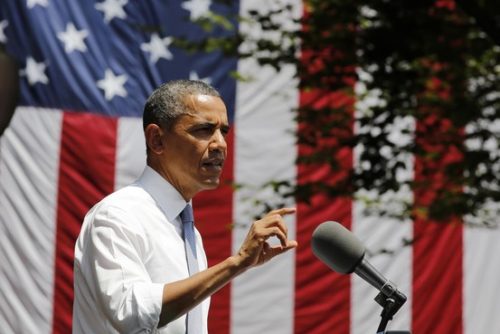
DG+IG aligns with President Obama’s new climate change plan
Embracing DG is the most efficient and cost-effective method to transition to a clean energy future characterized by high levels of renewables.
This afternoon, President Obama laid out his newest plan for cutting carbon pollution in the United States, acknowledging that the fight against climate change is essential to our nation’s health and economic future. His speech called for new forms of clean energy generation alongside engineering adaptations to protect cities and states from severe weather due to climate change. While notably light on specifics, the plan’s broad points clearly match up with theClean Coalition’s Distributed Generation + Intelligent Grid (DG+IG) vision, which calls for high levels of renewables integrated with intelligent grid solutions to increase clean local energy and power system resilience.
Embracing DG is the most efficient and cost-effective method to transition to a clean energy future characterized by high levels of renewables. Transitioning to DG will put clean local energy on rooftops, parking lots, and other disturbed lands close to load demand, enabling significant renewables withoutnecessitating costly long-distance transmission line usage or upgrades. By encouraging states to implement statewide CLEAN Programs (also known as feed-in tariffs with streamlined interconnection), the President can ensure a quick and cost-effective increase in renewables deployed nationwide.
The President also outlined plans for infrastructure upgrades – from seawalls to hardier grid construction – to protect the nation’s grid from more frequent severe weather. We already know America’s power system is overly vulnerable to failure: Every day, nearly 500,000 Americansspend at least two hourswithout electricity, while brownouts and blackouts grind economic activity to a halt – costing the country up to $188 billion annually. Reducing these outages is essential to our nation’s economic future. The President should note that incorporating smaller, decentralized power generation would diversify our nation’s energy supply and reduce the risk of widespread power outages. Meanwhile, intelligent grid solutions – such as demand response, advanced inverters, and energy storage – enhance the ability of the grid to ride through potential disruptions. In addition, the Clean Coalition’s DG+IG vision lays the foundation for standalone energy “islands” to provide continuous power for essential services during widespread grid failures, which several universities and research facilities successfully relied on for power during Hurricane Sandy’s costly and prolonged outages.
Modernizing the power grid with distributed generation and intelligent grid solutions will improve power system resilience and enable high levels of renewables, while also encouraging the electrification of transit with Electric Vehicles (EVs). Combining EVs with DG+IG provides an opportunity for renewables to play a major role in powering transportation, a sector that accounts for28% of all greenhouse gas emissions in the U.S.
Reducing carbon emissions in the United States will not be an easy process. But by embracing a modern power system centered around DG+IG, policymakers and utilities will have the required tools to spur clean local energy deployment, reduce carbon emissions, and enhance power system resilience. Smart, cost-effective action is necessary to preserve America’s place as a global leader in the fight against climate change. With DG+IG technologies, the President can push for simple, concrete steps to build a power system that is significantly cleaner, more efficient, and better able to weather the inevitably approaching storm.


